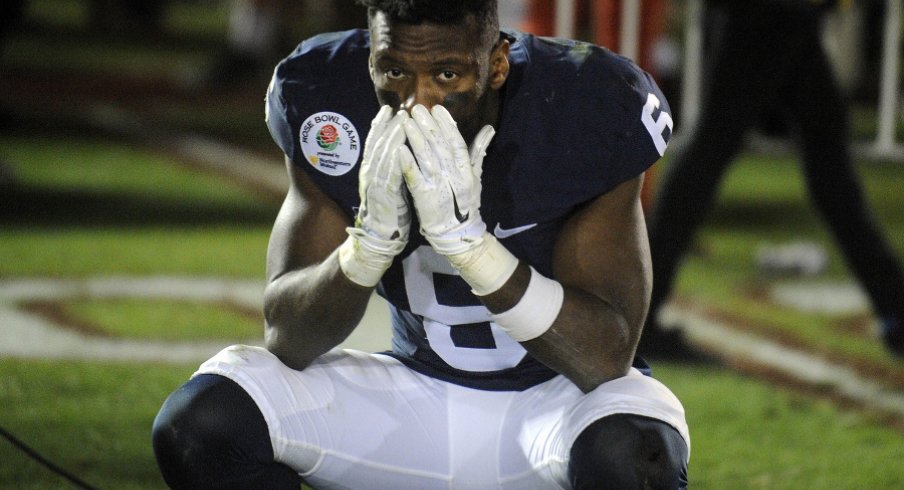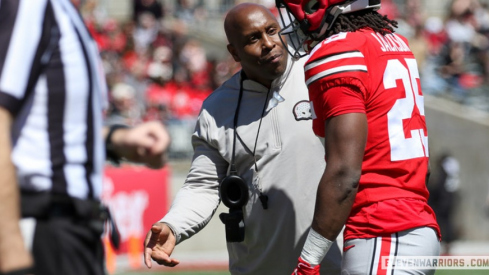Heralded as arguably the best conference in college football this year, the Big Ten took it on the chin this postseason. The conference finished 3-7 in its bowl games. The Big Ten East, perhaps the most competitive division in all college football, finished 0-5. The seven losses are the most in the entire history of the conference for a single bowl season.
These are bad statistics, and certainly disappointing, but hardly unusual or even the nadir for the conference in its recent past. The Big Ten had worse stretches more recently. All things considered, 2016 was only the fifth-worst bowl performance for the Big Ten this century. References to seven losses ignore that the percentage, not the denominator, is what matters here. The Big Ten has more members than it had previously and fielded more bowl teams than it had prior to expansion. The bowl record this year is bad but not the worst for the Big Ten.
| Year | B1G Bowl Record | Marquee Win(s) |
|---|---|---|
| 2000 | 2-4 (33%) | Citrus Bowl (Michigan) |
| 2001 | 2-4 (33%) | Alamo Bowl (Iowa) |
| 2002 | 5-2 (71%) | Fiesta Bowl (Ohio State) |
| 2003 | 3-5 (38%) | Fiesta Bowl (Ohio State) |
| 2004 | 3-3 (50%) | Capital One Bowl (Iowa) |
| 2005 | 3-4 (43%) | Fiesta Bowl (Ohio State), Orange Bowl (Penn State) |
| 2006 | 2-5 (29%) | Capital One Bowl (Wisconsin) |
| 2007 | 3-5 (38%) | Capital One Bowl (Michigan) |
| 2008 | 1-6 (14%) | Outback Bowl (Iowa) |
| 2009 | 4-3 (57%) | Orange Bowl (Iowa), Rose Bowl (Ohio State) |
| 2010 | 3-5 (38%) | Sugar Bowl (Ohio State, later vacated) |
| 2011 | 4-6 (40%) | Sugar Bowl (Michigan) |
| 2012 | 2-5 (29%) | Gator Bowl (Northwestern) |
| 2013 | 2-5 (29%) | Rose Bowl (Michigan State) |
| 2014 | 6-5 (55%) | Sugar Bowl, CFP Championship (Ohio State) |
| 2015 | 5-5 (50%) | Fiesta Bowl (Ohio State) |
| 2016 | 3-7 (30%) | Cotton Bowl (Wisconsin) |
References to 2006 were almost immediate in large part because of the nature of the losses for Michigan and Ohio State, the conference's signature programs. Michigan looked completely overwhelmed for three quarters before losing a nail-biter to Florida State. Ohio State was similarly outmatched and routed in only its second shutout loss in bowl history. Only the box score of that 2007 debacle against Florida approximates what happened to Ohio State against Clemson. Thus, 2006 comparisons seems appropriate here.
Yet, references to 2006 omit that the conference compared well enough to programs across the landscape even if Michigan and Ohio State were exposed at season's end. Penn State beat Tennessee, the SEC East's No. 2, in the Outback Bowl. Wisconsin beat 10-win SEC West champion Arkansas in the Capital One Bowl as well.
That said, those do constitute the only two Big Ten wins for the Big Ten in 2006. Its bowl record of 28.57% is a few percentage points shy of the 30% mark for the Big Ten this year. The extent to which 2016 compares to 2006 for the Big Ten is ultimately a statement that both had some nice moments and some awful moments. Neither were necessarily as bad as we would think in the present or remember from the past.
Lamentations about the Big Ten's performance in 2016 omit how awful the league was in the few years after 2006. Its marquee programs were either manhandled by more talented teams (e.g. Illinois, Ohio State, and Penn State vs. USC) or lost in embarrassing fashion to lesser teams (prominently, Michigan vs. Appalachian State). As a whole, the best teams in the conference were not recruiting on par with the powers of the time and then-mid-tier programs like Michigan State had yet to rise to prominence. The surprise story from 2006, Wisconsin took a huge step back in the years after Bret Bielema's debut.
This came to a head in the 2008 season, which was a perfect storm for an awful stretch for the Big Ten. The conference finished with just one bowl win in seven tries. Iowa routed South Carolina in the Outback Bowl, but that performance stands at odds with a heart-breaking loss for Ohio State in the Fiesta Bowl and an overtime loss by Northwestern against Missouri in the Alamo Bowl.
Every other Big Ten program lost by double digits in their bowl that year. USC beat Penn State by 14 in a game that was never as close as that would indicate. Georgia beat a meek Michigan State team by 12. Kansas routed Minnesota by 21 in the Insight Bowl. Florida State beat Wisconsin by 29.
By comparison, the Big Ten's losses in 2016 do not look as bad in the aggregate. Only Ohio State's and Iowa's losses in 2016 would resemble how poorly the conference performed in 2008. Even a double-digit loss by Nebraska this year comes with the immediate qualifier that everyone of consequence for Nebraska's offense was out with an injury.
Fans of the conference who wish it would acquit itself better should remember that the conference already has. The lessons from 2006-2008 were the Big Ten, arguably the best conference of the 1990s, was coasting on reputation when teams from other conferences began to spend more and invest more in their product. Teams in the Big Ten were not courting big-name head coaches nor were they investing in support staff, recruiting, and assistants like an Alabama, Florida, or USC.
Now the Big Ten is. The conference boasts, among other things, three national championships (Urban Meyer) and three former NFL head coaches (Jim Harbaugh, Mike Riley, and Lovie Smith). It is also spending much more on facilities and assistants than it was a decade ago. Fans saw this manifest in big seasons for the conference in 2014 and 2015. These were the biggest years for the Big Ten since 2002.
Treat 2016's end for what it was: hardly the worst it's been and arguably an aberration similar to how awful the SEC West was to end 2014 (i.e. its 2-5 record in bowl games). The Big Ten's best programs are in great position going forward. A 30% bowl game record is hardly ideal but far from indicative of the quality of the conference as it would have been ten years ago.


